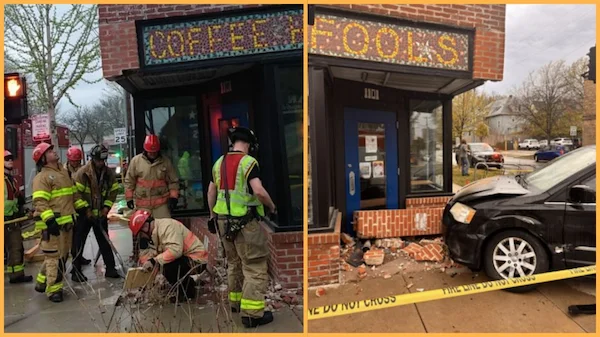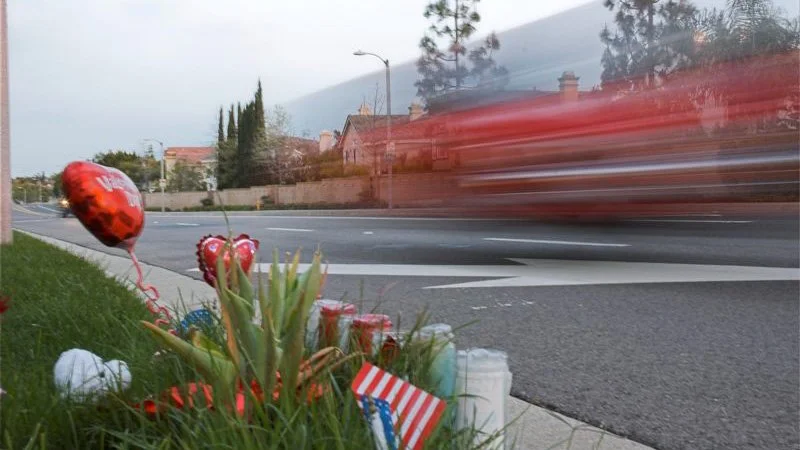Editor's Note: The challenges our cities face are growing, but so is the strength of this movement. Every story we share, every idea we spread, and every tool we build exists because people like you are committed to showing up. Your membership isn’t passive—it’s the momentum that makes change possible.
In 1989, sociologist Ray Oldenburg coined the term “third place” to describe the communal hangouts that are separate from home (“first place") and work (“second place”). These places could be anything from neighborhood watering holes to bookstores, barbershops, community centers or even stoops. For Oldenburg, the function of the establishment was less important than how it facilitates interaction — “good natured conversation,” as he put it — and fosters community. “The beer joint in which the middle class American takes no pride can be as much a third place as the proud Viennese coffeehouse,” he wrote in his book, "The Great Good Place."
Starbucks built its brand on being a third place.
“It never really was about the coffee to me with Starbucks,” Matt Dollinger wrote for Fast Company in 2008. “When I think about Starbucks, I think about Comfy Chairs, Great Smells, Pretty People and WiFi.”
The company prided itself on being a hideaway between home and work, even billing itself as the “world’s conference room.” Its ambiance was a far cry from competitors like Dunkin’ Donuts. Everything from the dim lighting to the plush armchairs, the earth-toned color scheme and even the ceiling height conspired to maximize what the company’s representatives called the “Starbucks experience.” For Dollinger — and millions of consumers — the “experience” made the detour worth it, even if Dunkin’s coffee was a little better and nearly $1 cheaper.
Rounded tables were as much an aesthetic choice as they were a means of encouraging conversation between coffee drinkers. The store playlists were an invitation to linger. It was as if the company’s handbook was Oldenburg’s criteria for a third place.
When every other fast food establishment was expanding its drive-thru offerings in the late 1980s and '90s, Starbucks resisted. “We don’t want to become just another commodity product,” the company’s finance chief said in a 1995 profile. “The drive-thrus are a way for the converted to get their coffee a little quicker. It’s not the way we want people to discover the Starbucks experience.”
Yet, by 2022, Starbucks appeared to have scrapped the “Starbucks experience” entirely. Across the country, cozy lounge chairs were replaced with metal stools — where seating wasn’t done away with altogether. Bathrooms, outlets and tables also disappeared. The company even departed from its 1990s ethos and promised to outfit 90% of new locations with “state-of-the-art” drive-thrus. Even New York City, of all places, has Starbucks drive-thrus now.

Choosing the transactional over the experiential, as journalist Nathaniel Meyersohn put it in a CNN piece enumerating the changes to the coffee shop, is expected for any company that grows as large and lives as long as Starbucks has. Some changes were pandemic-necessitated adaptations that were never reversed, while others were a response to new norms. According to the company, most purchases are made through its mobile app, the majority of drinks ordered are cold, and apparently, people just don’t want to sit inside a Starbucks as much anymore.
Yet, this isn’t simply a company adjusting its business model to reflect consumer trends. The brand is still holding onto its legacy as a third place, going so far as to redefine the third place as a feeling rather than a physical space:
“The Third Place has never been defined solely by a physical space, it’s also the feeling of warmth, connection, a sense of belonging,” a press release stated. “Digital technology is helping augment and extend that feeling of connection with customers — whether they are in Starbucks stores, in their cars, on their doorsteps.”
Part of “reimagining the third place,” as Starbucks described it, involved investing $450 million into new coffee-making equipment and a better mobile ordering system. The focus of both upgrades was to speed up the drink-making process at drive-thru locations. Efficiency was core to this new feeling, as was suburban expansion.
Even if a third place is more than just a physical space, it’s difficult to see what any of these upgrades have to do with it.
It’d be one thing if the company kept the locations long beloved for their ample seating, WiFi and culture while increasing suburban options. However, that’s not the case. Since 2020, Starbucks has set out to close 400 of these centrally located stores, the bulk of which patrons could access by foot. It reduced and removed seating from the few remaining urban locations. Its leaders claimed that nobody wanted to sit in a Starbucks anymore, and they made sure that nobody ever would.
In reimagining the third place, Starbucks has removed all the hallmarks of one. The Starbucks where you studied for finals with your classmates, recovered from that awkward first date, won a chess match and took that job interview no longer exists. It’s now a conveyor belt where speed rules and the ideal customer experience is spending as little time in the store as possible. “Next!”
What does this mean for other third places?
In praising third places for being at the heart of a community’s social and economic vitality, Oldenburg warned that their decline would be disastrous for American society at large. Does Starbucks’ switch spell doom for other coffee shops? If the consumer trends it cites are true, does a cafe in the city stand a chance?
Luckily, Starbucks' city woes don’t appear to be shared by the dozens of independent coffee shops that have opened in the last decade. In the center of Philadelphia, where Starbucks offers pick-up only, sit-down cafes are thriving. On any day of the week, Elixr, a coffee shop with ample seating, boutique drinks and a location only a few blocks from Starbucks, is teeming with customers. The scene is a mix of people reading, typing, laughing and simply lingering.
This could be said for almost any cafe in the city. The same “work from home crowd” costing Starbucks customers eagerly takes refuge in these establishments. For the price of a latte, you have a workspace, an escape from the chores that await you at home and a conversation waiting to happen at your table. As an added bonus, the success of these cafes also keeps money in the community.
- You might want to read: “Three Things I’ve Learned in My Local Coffee Shop”
Starbucks can suggest that a mobile app, a car waiting in line at one of their drive-thrus and a several-thousand-dollar coffeemaker are the new ingredients of the “reimagined third place,” but the appetite for traditional, physical third places hasn’t disappeared.
Pandemic-prompted street closures continue to draw record crowds. Park benches and pocket plazas continue to serve as a neighborhood getaway. Even the scrappiest examples of placemaking, from crumbling outdoor seating to shipping-container breweries, continue to lure customers, especially during nice weather.
In the end, maybe it’s not that fewer people want to sit inside a Starbucks; maybe it’s that Starbucks wants fewer people sitting inside.
Learn More
Is your city missing third places? Learn how to create welcoming, enjoyable spaces quickly and easily with the Local-Motive 2024 session “3 Quick Steps to Building a Third Place Through Tactical Urbanism.”





